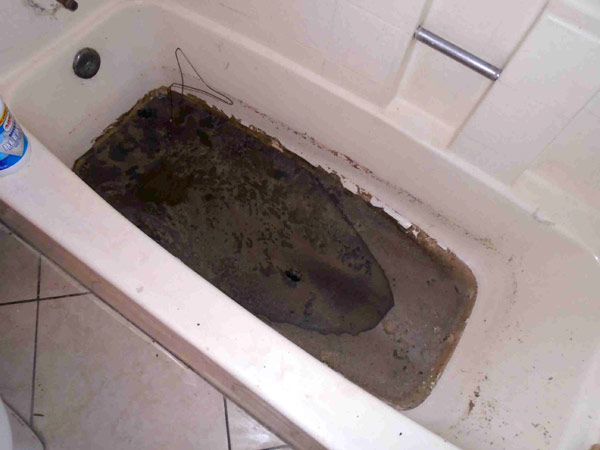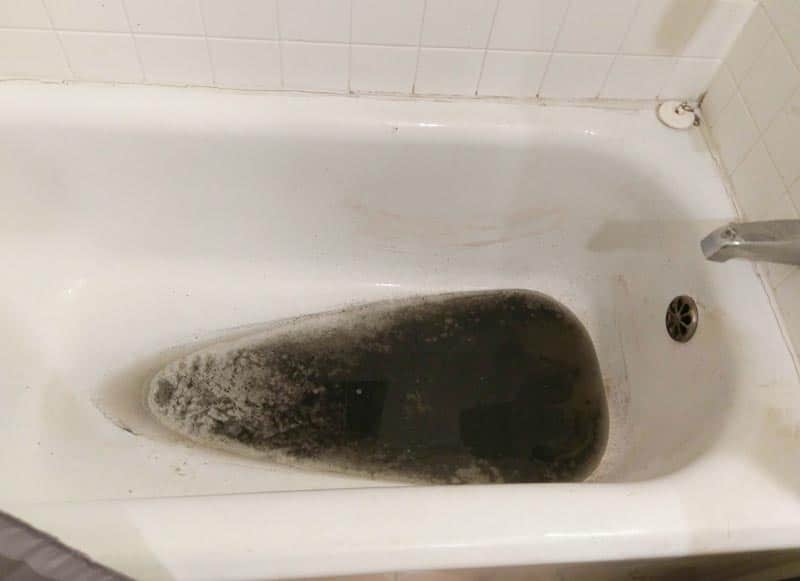Leading Reasons for Waste Coming Up in the Bathtub
Leading Reasons for Waste Coming Up in the Bathtub
Blog Article
The publisher is making several good points on Why is There Sewage Coming Up Through the Bathtub in general in this post following next.

Sewage backup in the tub can be a traumatic and unsanitary problem for any property owner. Not just is it inconvenient, but it also positions major health threats and shows underlying issues with the plumbing system. Understanding why sewage is coming up with the bathtub is essential for taking suitable activity to address the issue effectively.
Introduction to the Problem
Understanding the Issue
When sewer draws back up right into the tub, it's a clear sign of a problem with the drain system. The wastewater that ought to be moving away from your home is instead finding its back right into your space, which can result in considerable damage and carcinogen.
Possible Reasons
Several elements can add to sewer backup in the bathtub. From clogs in the sewer line to problems with the plumbing framework, recognizing the origin is essential for locating a solution.
Typical Reasons for Sewage Back-up
Clogs in the Drain Line
One of one of the most typical sources of sewage backup is an obstruction in the sewer line. This can occur due to the build-up of particles, grease, or international items in the pipelines, protecting against correct flow and triggering sewer to back up into your bath tub.
Tree Origin Intrusion
Tree roots looking for moisture and nutrients can penetrate sewer lines with tiny splits or joints. In time, these roots can grow and expand, creating significant damage to the pipelines and leading to sewage back-up problems.
Aging Infrastructure
Older homes might have outdated plumbing systems that are more at risk to corrosion, cracks, and degeneration. As pipes age, they come to be much more susceptible to leakages and clogs, raising the likelihood of sewage back-up incidents.
Heavy Rainfall or Flooding
During periods of heavy rainfall or flooding, the sewer system may come to be overwhelmed with excess water, creating back-ups and overflows. This can result in sewer supporting right into bathtubs and various other components inside the home.
Health Dangers Connected With Sewage Backup
Contamination of Water System
Sewer backup can contaminate the supply of water in your house, positioning a severe health threat to you and your household. Exposure to infected water can result in stomach issues, skin infections, and other health problems.
Spread of Illness
Sewer has damaging microorganisms, infections, and bloodsuckers that can cause a variety of conditions, consisting of hepatitis, cholera, and gastroenteritis. Entering contact with sewage or contaminated surfaces places you at risk of infection.
Mold Growth
Moisture from sewer backup can develop suitable conditions for mold and mildew growth in your house. Mold spores can worsen respiratory issues and trigger allergic reactions in delicate people, making prompt clean-up essential.
Indicators of Sewer Backup
Foul Odors
Unpleasant odors rising from drains pipes or components, particularly in the washroom, might indicate sewage backup issues. These odors are usually solid and persistent, signaling a problem that requires immediate interest.
Slow Draining Fixtures
Tubs, sinks, and toilets that drain slowly or otherwise in any way could be experiencing sewage backup. If several fixtures are influenced all at once, it's likely that the issue originates from a common factor, such as the primary sewer line.
Gurgling Noises
Weird gurgling or gurgling sounds originating from drains pipes when water is running in other places in your house are a measure of air caught in the plumbing system. This air buildup can arise from sewage back-up and should be examined promptly.
Immediate Actions to Take
Shutting Off Water
In case of sewer back-up, it's important to turn off the supply of water to stop additional contamination and damages. Situate the major water shutoff valve in your home and closed it off until the issue can be fixed.
Calling a Professional Plumber
Taking care of sewer backup is not a DIY task. Call a licensed plumber with experience in managing sewage-related issues to assess the scenario and execute required fixings or cleanups.
Staying Clear Of Contact with Contaminated Water
Till the sewage backup is solved, avoid contact with contaminated water to avoid the spread of germs and microorganisms. Put on protective equipment if you should remain in the damaged area and wash your hands completely later.
Safety nets
Normal Upkeep of Drain Lines
Schedule regular inspections and maintenance of your drain lines to determine and resolve prospective issues before they escalate into major issues. This can include cleaning out particles, checking for tree origin breach, and fixing any damaged pipelines.
Installing Backwater Valves
Think about installing backwater valves in your plumbing system to prevent sewer from receding right into your home throughout durations of heavy rainfall or flooding. These shutoffs instantly close when water starts backing up, shielding your residential property from contamination.
Correct Disposal of Household Waste
Avoid purging anything other than toilet paper and human waste down the toilet to stop blockages and obstructions in the drain line. Dispose of grease, oil, and other household chemicals appropriately to minimize the threat of plumbing problems.
Cleaning Up After Sewer Back-up
Disinfection Procedures
Thoroughly sanitize and sanitize influenced areas after sewage backup to remove hazardous bacteria and protect against mold and mildew growth. Usage appropriate cleaning products and protective gear to make sure secure and efficient clean-up.
Reconstruction of Impacted Areas
Repair any kind of damage to flooring, walls, or components triggered by sewer back-up. Depending on the extent of the damages, you might need to replace carpets, drywall, or various other products to restore your home to its pre-loss problem.
Why is Sewage Coming Up Through Your Bathtub?
Reasons You May Have Sewage in Your Bathtub
All the drains in your home lead down different pipes to get to the main sewer line. If you’re seeing sewage in the bathtub, the problem is that the main sewer line is clogged up, which is causing the water running through other drains to be pushed back into other pipes. The problem isn’t the bathtub, but the main line. The sewer line can get backed up by anything that goes down the drain, from food waste, hair and soap particles to jewelry or children’s toys. Tree branches or dirt can also impact the sewer line. If you’re seeing sewage in the bathtub, you have a big problem that usually needs a professional plumber. Trying to fix this problem without the right tools or knowledge can lead to bigger plumbing problems.
Fixing a Clogged Sewage Line
Although you shouldn’t try to fix the clogged sewer line on your own, you may be able to mitigate the issue until you can get a plumber to your home. A plunger isn’t going to help, because it won’t be able to reach the sewage drain to unblock the problem.
Turn Off Water
Find the main shutoff valve to your home to turn off the water. This prevents more water from going down the drain which is only going to flow back into your bathtub.
Snake the Toilet and Drain
Start by using a drain pipe snake to clean out the toilet drain. Rotate the snake clockwise when you push the snake down. As you pull it out, the snake should spin counterclockwise. Follow up by snaking out the bathtub drain. If you are successful, both the toilet and shower will drain efficiently. If you’re not successful, you probably have a bigger problem than your tools and experience can manage.
Contact a Professional Plumber
Pros have the tools to find the source of the problem and the experience to manage big blockages without causing more damage to your pipes. It can save you a lot of stress by contacting the professionals sooner rather than later.
Identify the Early Signs of a Clogged Sewage Line
If you’re gearing up for a holiday family gathering or just want to avoid the hassle of a clogged sewage line in your home, make sure you recognize the signs of a clogged sewer line.
Slow drains are a sign of a sewer line problem. Gurgling drains from any drain in your home indicate that you may have an obstruction in the drains. If your toilet keeps getting clogged, it might be a problem with the sewer line. When you see laundry water or water from the dishwasher in different sinks in the home, it’s an indication that your sewer drain is beginning to get backed up. These symptoms can often be “fixed” temporarily to get through a day or week before you start seeing the same problem. When it comes to plumbing problems, you want to fix the root of the problem instead of muddling through. The clog will not go away on its own.
https://handymanconnection.com/mississauga/articles/why-is-sewage-coming-up-through-your-bathtub/

We are very interested in and I'm hoping you liked our post. Please pause to share this blog post if you appreciated it. Thank you so much for taking the time to read it.
Call Today
Report this page